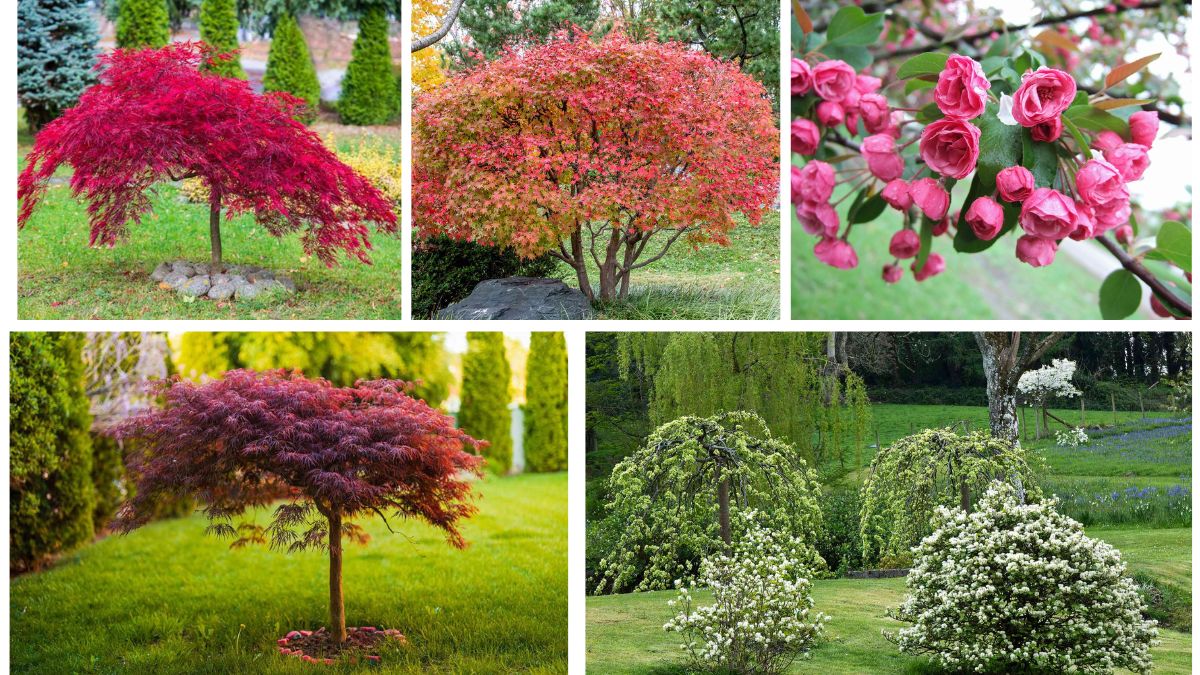When it comes to designing a yard that feels both practical and picturesque, small ornamental trees strike the perfect balance. They don’t overwhelm the space the way large canopy trees often do, yet they provide charm, shade, and seasonal beauty in ways that shrubs and flowers can’t quite match. Whether your yard is cozy and compact or expansive but in need of defined corners, these trees bring personality, elegance, and function.
This article explores why ornamental trees are ideal for yards, what to consider before planting, and some of the most stunning options you can grow for shade and style.
Why Choose Small Ornamental Trees?
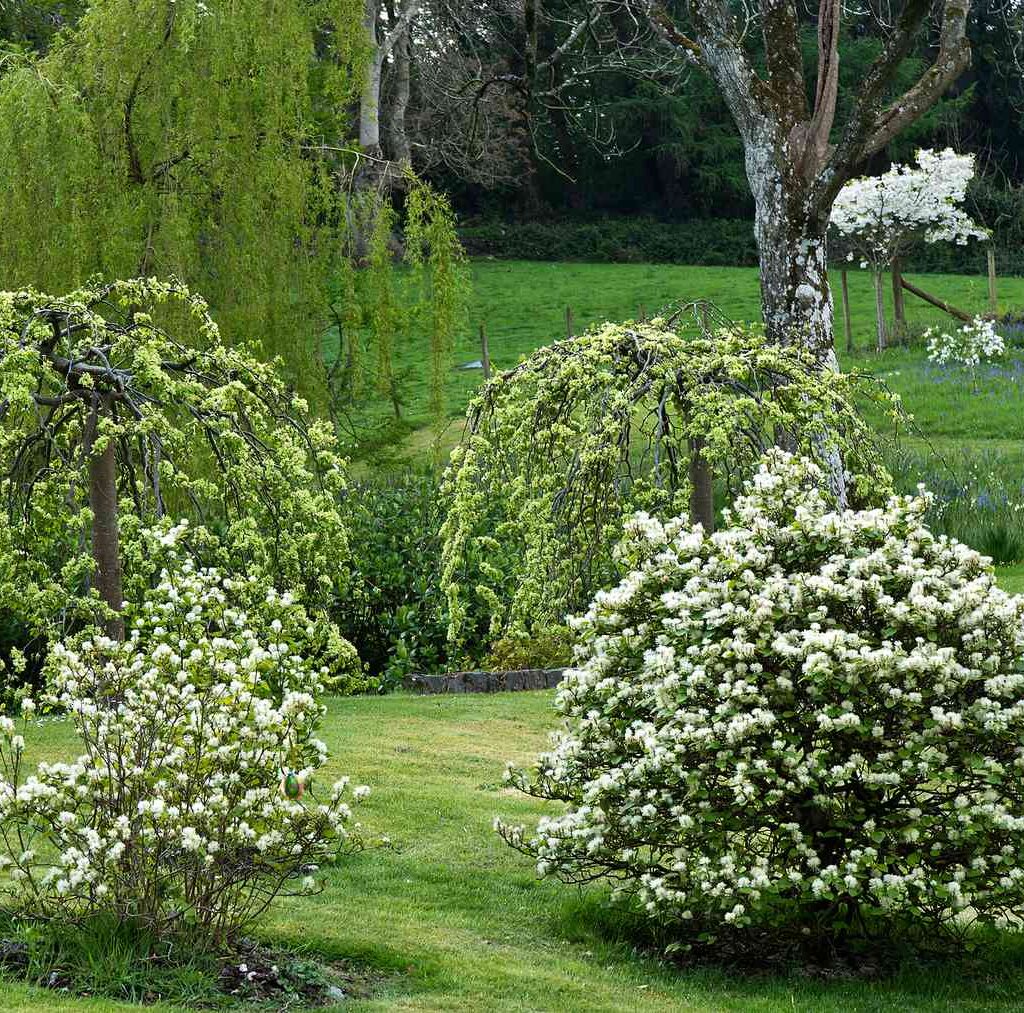
Unlike towering oaks or maples, small ornamental trees are yard-friendly. Their size—typically under 25 feet tall—makes them perfect for both small gardens and large landscapes where accents are needed. Here’s why they’re such an excellent choice:
- Shade Without Overcrowding – Smaller trees provide dappled shade that makes patios, pathways, or seating areas comfortable without overwhelming the space.
- Year-Round Appeal – Many ornamental trees have seasonal highlights like spring blossoms, vibrant fall foliage, or winter bark patterns.
- Low Maintenance – With controlled growth, pruning and upkeep are easier compared to large shade trees.
- Wildlife Benefits – They often attract birds, pollinators, and beneficial insects, creating a lively garden ecosystem.
- Versatility – Perfect for borders, driveways, patios, or as standalone focal points.
Factors to Consider Before Planting
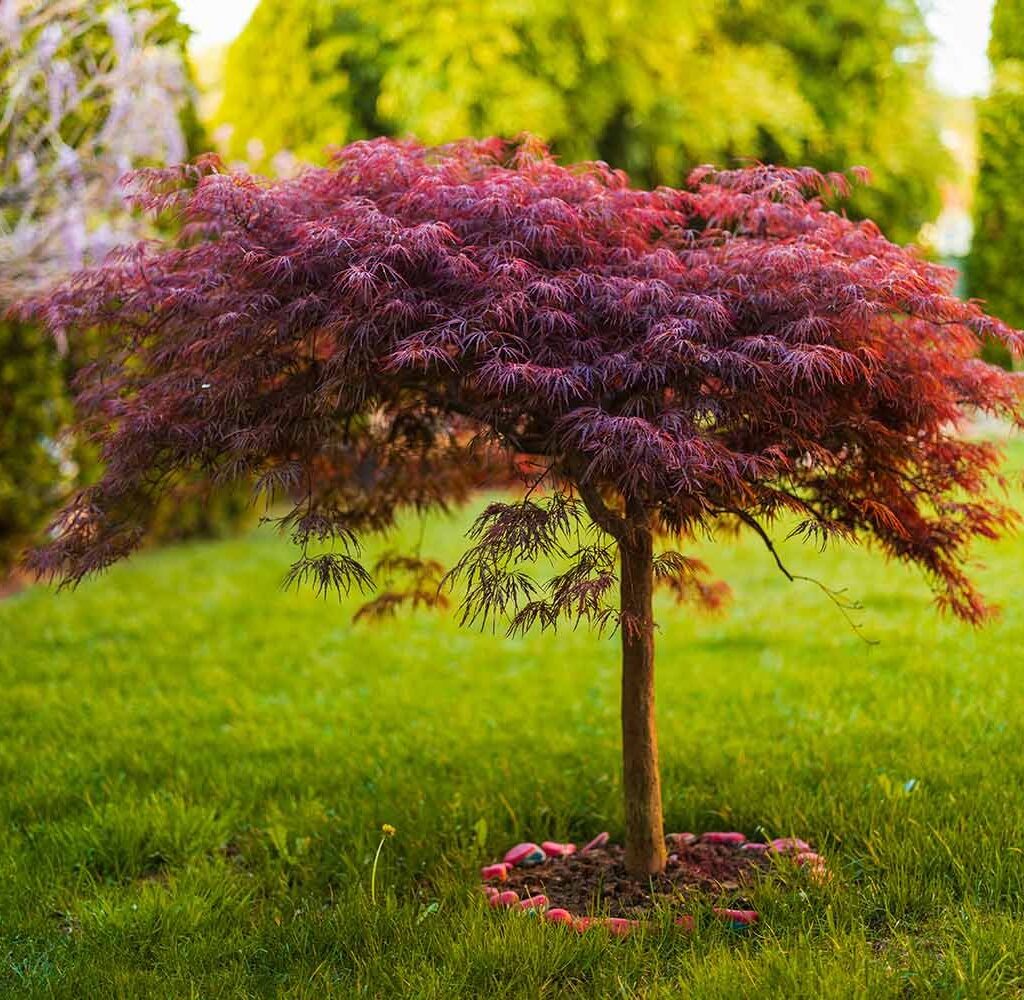
Before choosing your ornamental tree, think about:
- Space Available – Ensure the mature height and spread of the tree fit your yard.
- Soil Type and Drainage – Some trees thrive in sandy soils, while others need rich, loamy conditions.
- Sunlight – Most ornamental trees love full sun, but some varieties tolerate partial shade.
- Climate – Choose trees suited to your USDA hardiness zone for long-term success.
- Purpose – Do you want flowers, fall color, fruits, or year-round greenery?
With these in mind, let’s look at some small ornamental trees that bring both shade and style to your yard.
1. Japanese Maple (Acer palmatum)

Few trees embody elegance as beautifully as the Japanese Maple. With delicate, lacy leaves that transform into fiery shades of red, orange, and gold in autumn, this tree makes an instant focal point.
- Height & Spread: 10–20 feet tall and wide.
- Best For: Shady corners, patios, or near entrances for dramatic impact.
- Care Tips: Prefers partial shade, moist, well-drained soil, and protection from harsh afternoon sun.
- Why It Works: Provides light shade and unmatched seasonal color while maintaining a compact form.
2. Flowering Dogwood (Cornus florida)
Known for its breathtaking spring blossoms, the Flowering Dogwood offers beauty in every season—blooms in spring, lush green shade in summer, red berries in fall, and textured bark in winter.
- Height & Spread: 15–25 feet tall and wide.
- Best For: A yard centerpiece or lining pathways.
- Care Tips: Thrives in partial shade and slightly acidic, well-drained soil.
- Why It Works: Provides shade with a natural canopy and four-season interest, attracting birds and butterflies.
3. Redbud (Cercis canadensis)
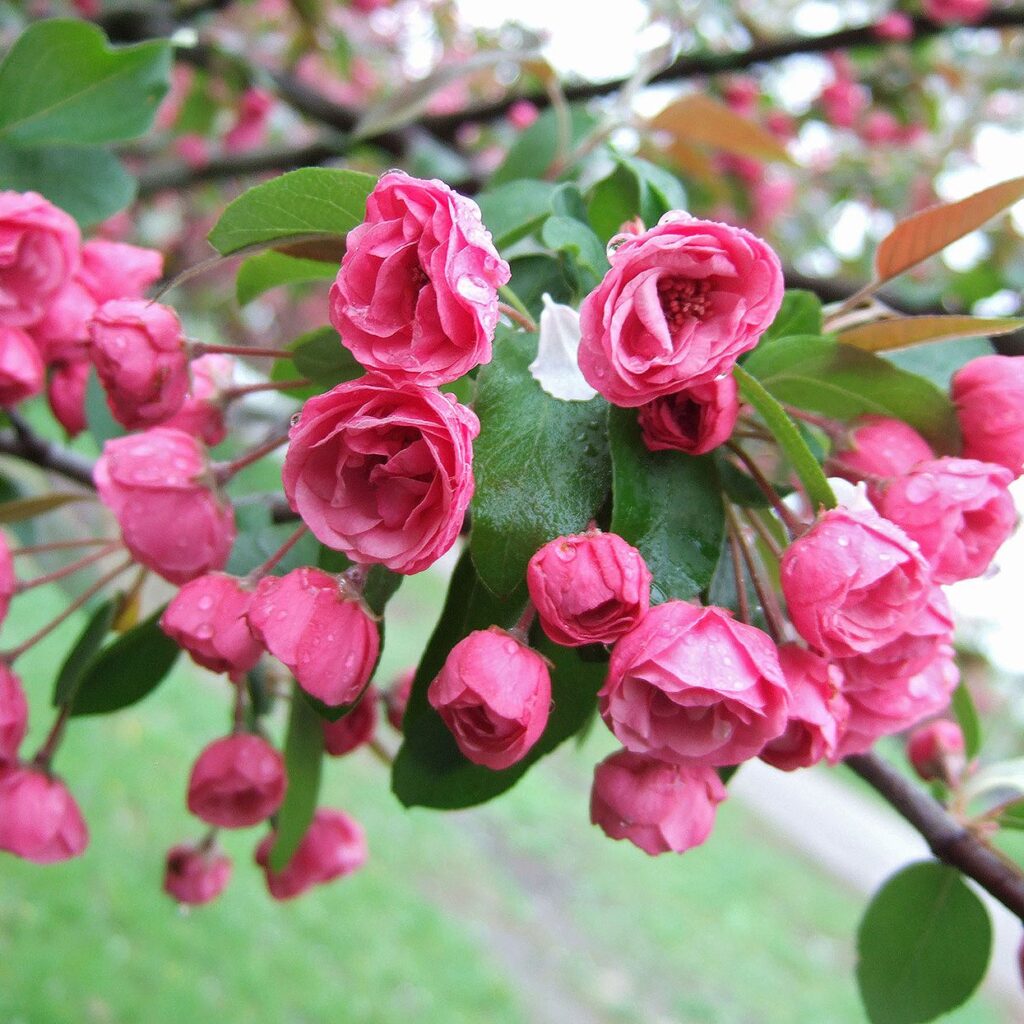
The Redbud tree bursts into spring with vibrant pink or magenta flowers that appear before its leaves. Its heart-shaped foliage adds summer shade, while its golden-yellow fall color brightens the landscape.
- Height & Spread: 20–30 feet tall and wide.
- Best For: Front yards, patios, or mixed borders.
- Care Tips: Prefers full sun to partial shade and well-drained soil.
- Why It Works: Provides ornamental beauty with shade and is especially valuable in small to medium yards.
4. Crape Myrtle (Lagerstroemia indica)
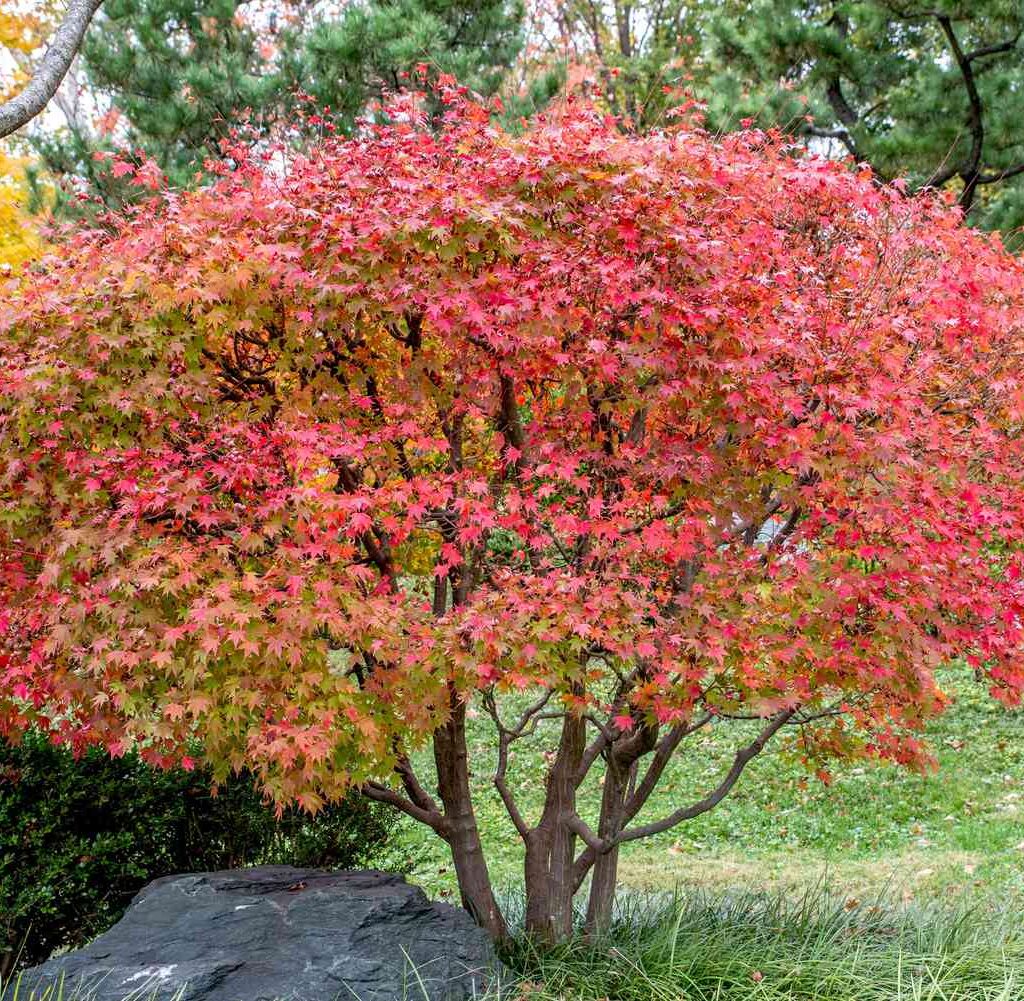
If you want long-lasting summer color, Crape Myrtle is unbeatable. With clusters of pink, red, purple, or white blooms, it doubles as a shade tree and a showstopper. Its bark also peels attractively, adding winter interest.
- Height & Spread: 15–25 feet tall, depending on variety.
- Best For: Driveways, patios, or sunny backyards.
- Care Tips: Loves full sun and tolerates heat and drought.
- Why It Works: Provides light, airy shade and colorful blooms when most trees are dormant in summer.
5. Serviceberry (Amelanchier spp.)
This multi-seasonal tree offers white spring blossoms, edible summer berries, vibrant fall foliage, and silver-gray winter bark. Its modest size makes it versatile for nearly any yard.
- Height & Spread: 15–25 feet tall, 10–15 feet wide.
- Best For: Borders, wildlife-friendly yards, or near patios.
- Care Tips: Adaptable to sun or partial shade; prefers moist, well-drained soil.
- Why It Works: Provides filtered shade and is one of the best ornamental trees for attracting birds.
6. Crabapple (Malus spp.)
A Crabapple tree is a yard classic, offering profuse spring blossoms, small fruits for wildlife, and attractive fall foliage. Many dwarf varieties are available, perfect for compact spaces.
- Height & Spread: 10–25 feet tall and wide, depending on cultivar.
- Best For: Entryways or as a lawn specimen tree.
- Care Tips: Prefers full sun and well-drained soil; choose disease-resistant cultivars for easy care.
- Why It Works: Combines ornamental appeal with seasonal shade and attracts pollinators.
7. Smoke Tree (Cotinus coggygria)
For something truly unique, the Smoke Tree stands out with its fluffy, cloud-like “smoke” blooms and dramatic purple or golden foliage. It doubles as a shade tree and a sculptural focal point.
- Height & Spread: 12–15 feet tall, 10–12 feet wide.
- Best For: Statement planting or mixed shrub borders.
- Care Tips: Loves full sun and tolerates poor soils.
- Why It Works: Adds both shade and an artistic, whimsical quality to yards.
Benefits Beyond Beauty
Planting small ornamental trees isn’t just about aesthetics. They contribute significantly to your yard’s ecosystem and your lifestyle:
- Cooling Effect: Reduce yard temperatures and make seating areas more comfortable.
- Privacy: Offer partial screening without creating dark, closed-in spaces.
- Curb Appeal: Instantly boost the value and appearance of your property.
- Wildlife Habitat: Support birds, bees, and butterflies with blooms, berries, and shelter.
Care and Maintenance Tips
To keep your small ornamental trees healthy and stylish:
- Water Wisely – Deep watering helps roots grow strong.
- Mulch Regularly – Helps retain moisture and protect roots.
- Prune Carefully – Shape trees while they’re young to maintain size and form.
- Fertilize Occasionally – Use slow-release fertilizers in spring if needed.
- Protect from Pests/Diseases – Regularly check for issues like powdery mildew, borers, or aphids.
Final Thoughts
Small ornamental trees bring the perfect blend of shade and style to any yard. Whether you prefer the fiery autumn foliage of a Japanese Maple, the spring blossoms of a Dogwood, or the whimsical beauty of a Smoke Tree, there’s an option to fit every taste and space.
They prove that you don’t need towering giants to make a big impact—sometimes the most charming and functional additions come in smaller, ornamental forms. With the right tree, your yard can transform into a space that’s not just beautiful but also welcoming, comfortable, and alive with nature.
